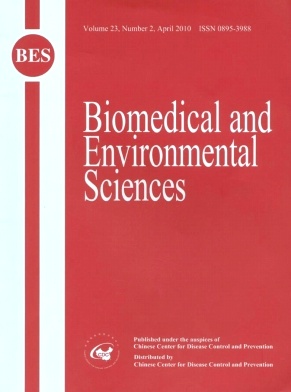Silicosis in Automobile Foundry Workers: A 29-Year Cohort Study
-
Key words:
- Foundry /
- Silica /
- Silicosis /
- Occupational exposure limit /
- Cohort study /
- Incidence /
- Person-year /
- Relative risk (RR) /
- Odds ratio (OR)
Abstract: Objectives The purposes were to determine the relationship between silicosis among foundry workers and their cumulative exposure to silica dust, and to establish a regression model to predict the risk for developing silicosis by a given length of employment and air concentrations of silica at worksites. Methods A 29-year cohort study was conducted, including all those employed for more than one year during January 1, 1980 to December 31, 1996 and all members of the cohort were followed-up to December 31, 2008. In total, 2 009 workers of an automobile foundry in Shiyan, Hubei province were recruited in the study, 1 300 at eight worksites including sand preparation, cast shakeout, and finishing, melting, moulding, core-making, overhead crane operation and pouring as exposed group, and the other 709 auxiliary workers at the same factory, such as electricians, inspectors, fitters, and so on, as control group. Person-years of observation were calculated by persons observed and years followed-up for each of them. Person-year incidence of silicosis and its relative risk (RR) or odds ratio (OR) and 95% confidence intervals (CI) among the workers were estimated, adjusted for relevant factors with logistic regression model using SPSS version 15.0 software. Results Totally, 2 009 workers were followed-up for 37 151 person-years and 48 cases of silicosis were found, with an overall incidence of 1.34 per thousand, 2.02 per thousand in exposed group, and 0.15 per thousand in control one. Risk of silicosis was significantly higher in the exposed group than that in the control one (RR=13.13, 95% CI 3.18-54.13), higher in men than that in women (RR=13.92, 95% CI 1.92-100.93). Risks of silicosis varied by job, highest in those exposed to cast shakeout and finishing (RR=28.14, 95% CI 6.43-123.11), followed by those exposed to pouring (RR=22.23, 95% CI 5.01-98.55) in the foundry. Average length of employment at onset of silicosis was 25.94 years, and silicosis incidence increased with length of employment. Average age at onset of silicosis was 47.83 years old. The risk of silicosis in workers with pulmonary tuberculosis was 2.57 folds as those without it (P<0.01). Ten deaths were recorded in those with silicosis, with a case-fatality rate of 20.83 percent three of them died of lung cancer, three of liver cancer, two of ischemic heart disease, and two of other diseases as their immediate causes of death. Incidence of silicosis in foundry workers positively correlated with their currulative silica exposure (OR=3.00, 95% CI 2.34-3.83). Risks of silicosis increased by 4.38 folds with an increase of 1 mg/m3-year of cumulative silica exposure, and by 3.79 folds with smoking, respectively, adjusted for alcohol drinking and age. Based on a logistic regression model fitted, incidence of silicosis is expected to be 44.6 per thousand for those with daily exposure to silica of 4.18 mg/m3 in average for 30 years, and if incidence of silicosis is expected to be less than 1 per thousand, daily exposure to silica should be controlled below 0.2 mg/m3 for those with 20 years of employment, or below 0.1 mg/m3 for those with 30 or 40 years of silica exposure. Conclusions At present, foundry workers in China still face high risk of developing silicosis. For lowering occurrence of silicosis in exposed workers, it seems necessary that current occupational exposure limits for silica at worksites in China should be reexamined and silica dust control measures be strengthend.
| Citation: | Silicosis in Automobile Foundry Workers: A 29-Year Cohort Study[J]. Biomedical and Environmental Sciences, 2010, 23(2): 121-129. |







 Quick Links
Quick Links
 DownLoad:
DownLoad: